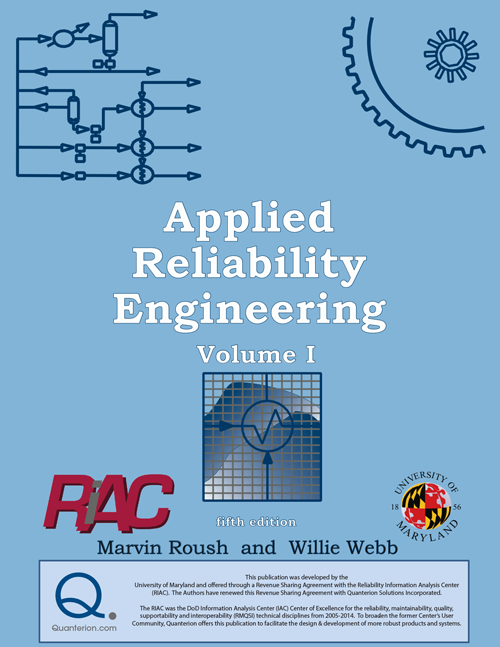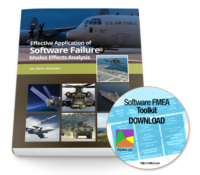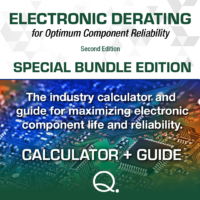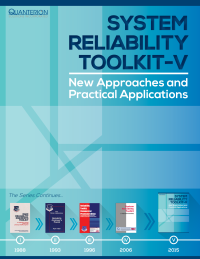| 1 Introduction to Reliability Engineering |
3 |
| 1.1 Relationship of Quality and Reliability |
3 |
| 1.2 Reliability Engineering as a Technical Discipline |
4 |
| 1.3 The Engineering World in which Reliability Engineers Work |
4 |
| 1.4 Domain of Activity of Reliability Engineers |
5 |
| 1.5 Risk Analysis as A Technical Discipline |
7 |
| 1.6 Formal Definition of Reliability |
8 |
| 1.7 Some Models of Failure |
10 |
| 1.7.1 The Stress-Strength Model |
11 |
| 1.7.2 The Damage – Endurance Model |
11 |
| 1.7.3 The Challenge – Response Model |
12 |
| 1.7.4 The Tolerance-Requirements Model |
12 |
| Exercises |
13 |
| 2 Why and How Things Fail |
15 |
| 2.1 Failure Causes and Mechanisms |
15 |
| 2.1.1 Basic Physics of Failure Concepts |
15 |
| 2.1.2 Failure of Material Objects |
15 |
| 2.1.3 Abrasive Wear |
17 |
| 2.1.4 Adhesive Wear |
18 |
| 2.1.5 Surface Fatigue |
19 |
| 2.1.6 Erosive Wear |
21 |
| 2.1.7 Cavitation Pitting |
22 |
| 2.1.8 Corrosion by Direct Chemical Attack |
24 |
| 2.1.9 Preventing Corrosion Failures |
24 |
| 2.1.10 Elastic Deformation of Materials |
29 |
| 2.1.11 Poisson’s Ratio |
31 |
| 2.1 12 Plastic Deformation |
31 |
| 2.1.14 Toughness of Materials |
34 |
| 2.2 Residual Stresses |
39 |
| 2.2.1 Thermal Residual Stresses |
42 |
| 2.2.2 Metallurgical Residual Stresses |
47 |
| 2.2.3 Mechanical Residual Stresses |
48 |
| 2.2.4 Chemical Effects on Residual Stresses |
51 |
| 2.2.6 Summary of Residual Stresses |
53 |
| 2.3 Preventing Mechanical Failures |
53 |
| 2.3.1 Stress Concentrations |
54 |
| 2.3.2 Fracture Resistance |
55 |
| 2.3.3 Critical Stress Intensity Factor |
55 |
| 2.4 Metal Fatigue |
56 |
| 2.5 Ceramics |
58 |
| 2.5.1 Mechanical Properties of Ceramics |
62 |
| 2.5.2 Stress-Strain Behavior of Ceramics |
63 |
| 2.6 Polymers |
65 |
| 2.6.1 Impact Strength |
68 |
| 2.6.2 Fatigue |
68 |
| 2.7 Software Failures |
69 |
| Exercises |
73 |
| 3 Probabilistic Models of Failure Phenomena |
77 |
| 3.1 Distributions of Strengths of Materials |
77 |
| 3.1.1 Empirical Distribution |
77 |
| 3.1.2 Random Variables |
80 |
| 3.1.3 Measures of Central Tendency of Distributions |
80 |
| 3.1.4 Measures of Dispersion for a Distribution |
82 |
| 3.1.5 The Normal (or Gaussian) Probability Distribution |
83 |
| 3.2 Stress-Strength Interference |
90 |
| 3.2.1 Labeling Convention to be Used |
90 |
| 3.3 Probabilistic Engineering Design |
94 |
3.3.1 Probability Distribution for Strength – (Approach
in 2 ways) |
94 |
| 3.3.2 Reliability Bounds in Probabilistic Design |
95 |
| 3.3.3 Safety Index |
96 |
| 3.3.4 Converting the Safety Index into Probability of Failure |
99 |
| 3.3.5 A Determination of Probability of Failure Example |
100 |
| 3.3.6 Modeling of Fatigue Phenomena |
101 |
| 3.3.7 Statistical Aspects of Fatigue |
102 |
| 3.3.8 Fatigue Measurements for a New Alloy |
103 |
| 3.3.9 Single-Stress Fatigue Data |
103 |
| 3.3.10 Cumulative Damage Considerations |
106 |
| 3.3.11 The Linear Damage Theory |
106 |
| 3.3.12 Cumulative Damage Theories |
108 |
| 3.3.13 Multiple Sampling of the Load Distribution |
109 |
| 3.3.14 Series System Under Load (Chain Model) |
110 |
| 3.3.15 Extreme Values |
112 |
| 3.3.16 Order Statistics |
112 |
| 3.3.17 Extreme-Value Distributions |
113 |
| 3.4 Graphical Analysis |
118 |
| 3.4.1 Graphing Process |
119 |
| 3.5 Extreme-Value Distribution Functions |
124 |
| 3.5.1 Summary for n-Link Chain |
124 |
| 3.5.2 Von Mises Form of the Extreme Value Distributions |
125 |
| 3.6 The Weibull Distribution |
125 |
| Exercises |
129 |
| 4 Life Models for Non-Repairable Items |
135 |
| 4.1 Introduction |
135 |
| 4.2 Qualitative Differences in Hazard Function |
141 |
| 4.3 The Exponential Distribution |
142 |
| 4.3.1 Exponential Model Represents No Wearout |
145 |
| 4.4 Non-Parametric Methods |
146 |
| 4.5 A More Detailed Examination of the Weibull Distribution |
149 |
| 4.5.1 Mean and Variance of the Weibull Distribution |
151 |
| 4.5.2 The Gamma Function |
151 |
| 4.5 The Lognormal Distribution |
160 |
| 4.6 The Binomial Distribution |
161 |
| 4.6.1 Need for the Binomial Distribution |
161 |
| 4.6.2 The Binomial Expansion |
161 |
| 4.6.3 The Single-Term Formula |
162 |
| 4.7 Statistical Inference |
163 |
| 4.8 Different Types of Statistical Intervals |
164 |
| 4.9 Estimation and Hypothesis Testing |
165 |
| 4.9.1 Method of Moments |
165 |
| 4.9.2 Confidence Intervals — Characteristics of Interest |
166 |
| 4.9.3 One-Sided Confidence Bounds |
167 |
| 4.9.4 Component Tolerances |
167 |
| 4.10 Combining Random Variables |
170 |
| 4.10.1 Combining Random Variables for Simple Functions |
170 |
| 4.11 General Aspects of Reliability Data |
173 |
| 4.12 Acquisition of Data |
174 |
| 4.12.1 Types of Data |
177 |
| 4.12.2 Multicensored Data |
178 |
| 4.12.3 Multiple Failure Modes |
180 |
| 4.12.4 Reliability and Life Data |
180 |
| 4.14.5 Reliability Data Sources |
182 |
| 4.15 Estimation Theory |
184 |
| 4.15.1 Estimator Properties |
184 |
| Exercises |
191 |
| 5 Reliability and Quality in Manufacturing |
199 |
| 5.1 Statistical Quality Control |
199 |
| 5.1.3 Statistical Basis of the Control Chart |
202 |
| 5.1.4 Process Capability |
203 |
| 5.1.5 Control Charts for Variables Measurements |
204 |
| 5.2 Quality Tools |
217 |
| 5.2.1 Cause and Effect Diagram |
217 |
| 5.2.2 Pareto Analysis |
218 |
| Exercises |
221 |
| Appendices |
229 |
| A Notation |
231 |
| B Definitions |
235 |
| C Rules of Boolean Algebra |
243 |
| D Statistical Tables |
247 |
| Table D-1 Standard Normal Cumulative Distribution Function |
249 |
| Table D-2 Critical Values of Student’s t Distribution |
253 |
| Table D-3 Critical Values of Chi- Square χ2 α Distribution Function |
255 |
| Table D-4 Critical Values of the Kolmogorov-Smirnov Statistic |
257 |
| Table D-5 F-Cumulative Distribution Function, Upper 1Percentage Points |
258 |
| Table D-6 F-Cumulative Distribution Function, Upper 5 Percentage Points |
260 |
| Table D-7 F-Cumulative Distribution Function, Upper 10 Percentage Points |
262 |
| E References |
265 |
| F Answers to Selected Exercises |
273 |
| Subject Index |
277 |








